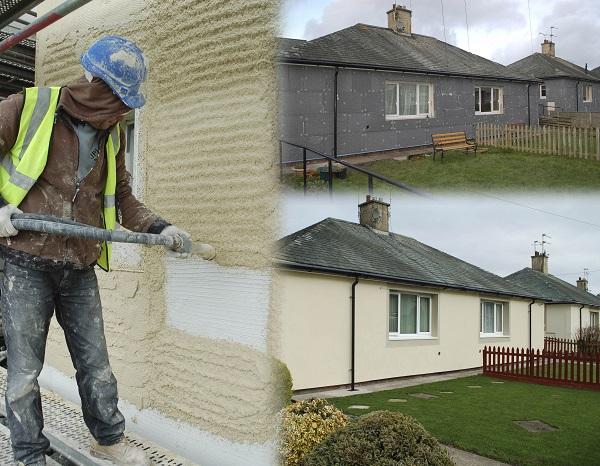How to get it right: Rendering in exposed locations
Render has two primary functions. The first is protection, where the render ‘weatherproofs’ the walls, allowing them to breathe by letting water vapour move from the inside to the outside of the structure while stopping the rain from forcing its way in.
The second function is decoration, where the render’s finish and colour beautify the building while correcting faults in line and level in the masonry. The applicator’s skill and ability usually determine the quality of the decorative finishes - a good reason to choose a specialist accredited applicator.
What thickness should the render be?
Under the British Standard Wind-Driven Rain Index, there are four ratings, namely Sheltered, Moderate, Severe, and Very Severe. South West England, West Wales, West of Scotland, and certain other west coast and southern locations have a ‘Very Severe’ rating.
Where there’s a ‘Very Severe’ rating, the render thickness should be increased to a minimum of 20mm for direct one-coat render applications and 5-6mm for external wall insulation base coat applications. An additional water repellent protection such as Paraguard AG from Parex is recommended if within one mile of the coast.
Why traditional renders fail
Polymer-modified, ready to use’ factory-produced renders contain high-quality raw materials and a range of admixtures (notably water repellents), which reinforce the waterproofing properties of the renders. This is called ‘physico-chemical’ waterproofing and uses both physics and chemistry technology to enhance the property of the renders.
Render prepared on site using standard sand and cement must be at least 20 to 25mm thick. However, the capability of the render is dependent upon the quality of the sand used, the design mix and is heavily reliant on good mixing techniques by the applicator. Poor mixing ratios and low quality materials are often the reasons traditional renders fail.
Adding water repellent into the mix on site serves no purpose, should not be carried out, and may even be harmful to pre-prepared render systems as it can lead to faults in the finish.
Render and rain
Heavy rainfall may lead to water reaching the masonry substrate if a poor-quality render is used or if the application’s not thick enough. Thickness, quality of render, and good polymer content slow down rain penetration into the wall.
Wind-driven rain is the worst case scenario that the facade will need to be protected against, where wind forces the rain against the facade. For wind-driven rain conditions, it will take approximately:
- Twice as long to cross 8mm of render than 6mm - e.g. min 2 hours
- 5 times as long to cross 12mm of render than 6mm - e.g. min 5 hours
- 7 times as long to cross 18mm of render than 6mm - e.g. min 7 hours
However, this will also be affected by the quality and type of render system used. A standard 15mm render thickness applied directly to masonry, using a modern factory-produced polymer modified render such as Parex Monorex or Monoblanco will withstand a prolonged ‘continuous’ rainfall of five hours before it is likely to penetrate through to the surface of the masonry.
On a good masonry substrate, it then has a further 100mm to penetrate before even reaching the cavity or on a solid wall, the masonry substrate is generally a minimum of 250mm thick, which provides even higher resistance to penetration.
However, the weak point will generally be the detailing around openings or poor workmanship. Good detailing and site monitoring will ensure a good application is achieved.
Find out more about Parex render systems on our LABC Assured web pages.
Please Note: Every care was taken to ensure the information was correct at the time of publication. Any written guidance provided does not replace the user’s professional judgement. It is the responsibility of the dutyholder or person carrying out the work to ensure compliance with relevant building regulations or applicable technical standards.
Sign up to the building bulletin newsletter
Over 48,000 construction professionals have already signed up for the LABC Building Bulletin.
Join them and receive useful tips, practical technical information and industry news by email once every 6 weeks.
Subscribe to the Building Bulletin




Comments
Add new comment